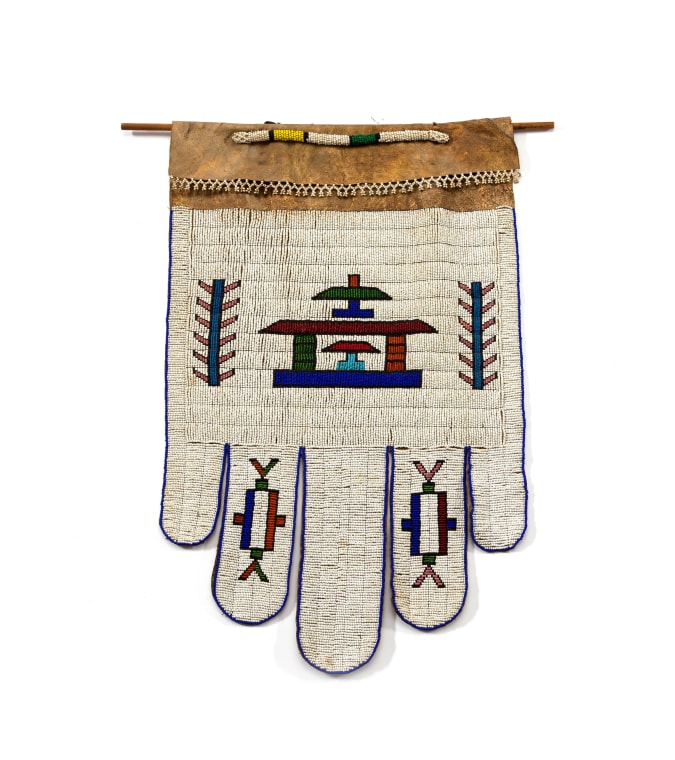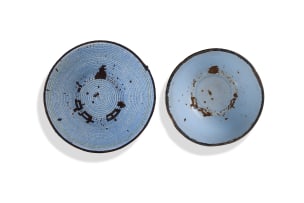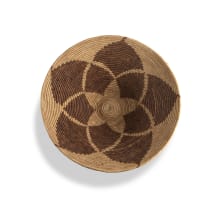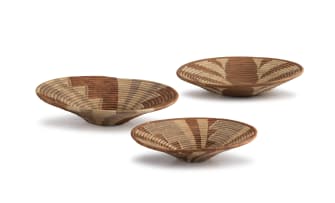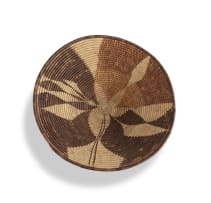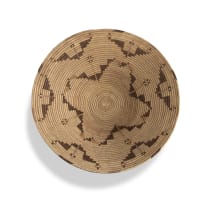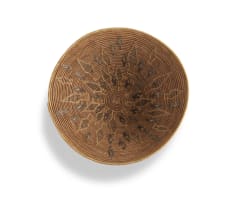Ndebele Bridal Apron (Jocolo)
Unrecorded Ndebele artist
About the Session‘Woven Legacies: Innovation & Tradition’ highlights a diverse range of materials, techniques, and processes from various regions, including Southern, Central and Western Africa. These works coalesce utility, aesthetics and cultural identity. From the tactile threads of textiles to the intricate blending of natural fibres in baskets and the sculptural forms of steel, copper, brass and beads, the concept of weaving is reimagined as a metaphor for connection, storytelling and the passing on of tradition.
Incl. Buyer's Premium & VAT
About this Item
Notes
Ndebele beadwork artistry is highly acclaimed and recognisable, partly due to mural artist Esther Mahlangu's celebrated designs painted on the BMW Art Car that toured the world in 1991 - blending automobile design with African art. This famous Ndebele icon was again lowered into the Iziko South African National Gallery in March 2024 to mark the start of a global tour for the artist's retrospective exhibition.
Striking geometric designs in bold blocks of texture and colour applied to the exterior walls of homesteads ( kraals) in the north-eastern regions of South Africa can be traced back as early as the 17th century. At this time, Ndebele immigrants from the east found refuge within Sotho-Tswana communities, where they adopted
aspects of their hosts' culture such as settled agriculture and mural decoration. Over time this developed into a new and distinctly evolving "Ndebele style". Designs on decorated walls were repeated in beadwork embellishment on ceremonial costume such as women's marriage attire, similar to Lot above. Richly beaded frontal aprons were worn to symbolically indicate the stages of a woman's life.
The jocolo is a particularly important part of the wedding ensemble as the primary step in the journey of her adult life - marriage. It is distinguishable by five frontal flaps - pointing down like a hand, made from copious quantities of tiny, imported glass "seed "beads embroidered onto a goatskin backing with sinew. Presented to the bride by her new husband's mother, the five pennants bring blessings of many children.
In this fine example the mainly white beadwork is punctuated with a stylised horizontal image of a house surmounted by an electric streetlight with branched trees on either side. Below, a bird's eye view of the home is repeated on two outer panels. The whole is finely edged by a thin outline of deep blue glass beads that glisten and shine as the bride moves and dances.
The distinctive, bright, primary colours and predominance of white beads as in this superb example, indicate the current preferences and availability of beads in the 1960's. The florescence of new colours and designs in the mid-20th century is understood as the assertion of Ndebele identity in an historic struggle for freedom. The acclaimed Ndebele artist Isa Kabini expresses this attitude simply in her powerful statement that "… We see what is around us and we make it our own".
- Carol Kaufmann, December 2024
1. "Then I knew I was good at Painting": Esther Mahlangu. A Retrospective. Iziko SANG February - August 2024.
2. in Kaufmann, C. (2010) 'The 8th Definitive: The luminous beauty of South African beadwork on stamps'
SA Post Office Philatelic Services and Iziko Museums, Pretoria.
View all Unrecorded Ndebele artist lots for sale in this auction
